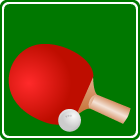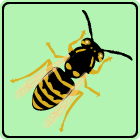


START
LESSON
GO TO THE GAMES
Click on the correct answer.
You will see the left side of an equation. Then you will see and hear two possible answers for the right side of that equation.
Click on the correct answer.
There are 10 questions in this test.
to start the lesson

anonymous 🦊
"Two variables"
Secondary math lessons to learn
'Grouped frequency tables' for 7th grade
7th grade / Statistics / Continuous data / Continuous grouped data / Grouped frequency tables
Grouped frequency tables
Data in frequency tables can be discrete or continuous. Discrete data consists of single values, often whole numbers, and is how most data is initially gathered. If there are many data points to process, it becomes useful to group that data into a set of classes of continuous data. Continuous data can be represented in a "Grouped frequency table". Each class covers the data points within a certain range, and the classes together cover the entire range of all the data points. In grouped frequency tables, it is important that the classes cover the entire range of the given data while not overlapping.
The benefit of grouped frequency tables becomes clear when there are so many raw data points that discrete values would become difficult to process. A limitation of continuous data is that individual data points are lost so that exact calculations of the mode, median or range of the original discrete data points becomes impossible.
In this topic you are asked to compare each grouped frequency table to the raw data that it should represent. Many of the tables have deliberate mistakes that you must identify. You can do so by counting up the data points for each class and comparing them to the given frequencies.
In the first question, the raw discrete data points are:
10, 8, 25, 18, 15, 22, 5 ,9
The grouped frequency table splits the data into classes: 1-10, 11-20, 21-30.
The frequency for the 1-10 class is given as 4. We can look through the data points and confirm that there are indeed 4 values within this range: 10, 8, 5 and 9. So that frequency is correct. Checking the 2 other classes shows us that the table does indeed accurately represent the data, so the answer in this case is "yes, the table does match the data".
With these interactive math lessons you will be learning "Grouped frequency tables" from
7th grade / Statistics / Continuous data in 3 easy steps. The math in our lessons consists of 8 questions that ask you to in each instance decide whether the grouped frequency table matches the raw data.
There are 3 easy math lesson activities in this "Grouped frequency tables" tutorial. These activities progress step by step to help you the learner gradually master this math topic. The activities are based on "3 stage questioning", a method of learning that quickly and easily builds your confidence as you work through the short series of lessons that strengthen your knowledge of the math that you want to learn.
When you have completed the tutorial for a topic, you should try some of our games before finally doing the test for your chosen topic. See the Help box below for detailed instructions on how to use the lesson activities to help you learn your math more easily.
UXO * Duck shoot * The frog flies * Pong * Cat and mouse * The beetle and the bee
Rock fall * Four in a row * Sow grow * Choose or lose * Mix and match





How to use our tutorials to learn
'Grouped frequency tables' for 7th grade
Introduction to the math topic
You start the tutorial with a lesson that introduces the math you will be learning. You will see a set of questions one at a time, and for each question you will see the written answer and also hear the answer to that question.
Repeat the question/answer by clicking on the brown speaker sign. Repeat the question/answer and expand the question graphic by clicking on the question box. Move between questions using the arrow buttons below the question. If there is additional information available for your chosen topic, the "i" button on the left upright bar will be brown on white. Click on the button to load the additional lesson information into the main interface.
Either / Or math lesson
This lesson moves on from the "Introduction" lesson and offers you two possible answers to each question. So, you will see a question then a voice will ask "Is this ... or is it ..." and you will have to choose which of the answers is the one that matches the question.
You choose an answer by clicking or tapping on one of the two answer boxes below the question. You can play the audio for each answer again by clicking on the speaker icon beside the written answer (if robot speech is available and enabled). The program will let you know each time whether you answered correctly. A star will light up red for a wrong answer or white/black for a correct answer.
This lesson asks you the questions in a random order compared to the introduction. At the end of the lesson, you can choose whether to repeat the lesson or move on to the next one.
What is it? math lesson
The final lesson of the tutorial shows you multiple possible answers for each question - you must choose the correct one. You are asked a question and below it are a list of two, three, or four possible written/numeric answers from this topic. Pressing the speaker icon will play the math audio for that answer.
For each picture, click on the answer that matches the question. The program will tell you whether you are right or not. As with the Either / Or activity a system of stars indicate your right and wrong answers. The What is it? lesson will show you all the questions you learned in the Introduction but in a random order.
When you complete the "What is it?" lesson, you can choose whether to go on to play some games with this topic, or whether you want to repeat some or all of the lesson activities in this tutorial. You should expect to get 80% of the answers correct in most of the activities before trying some of the Math games with this topic.











